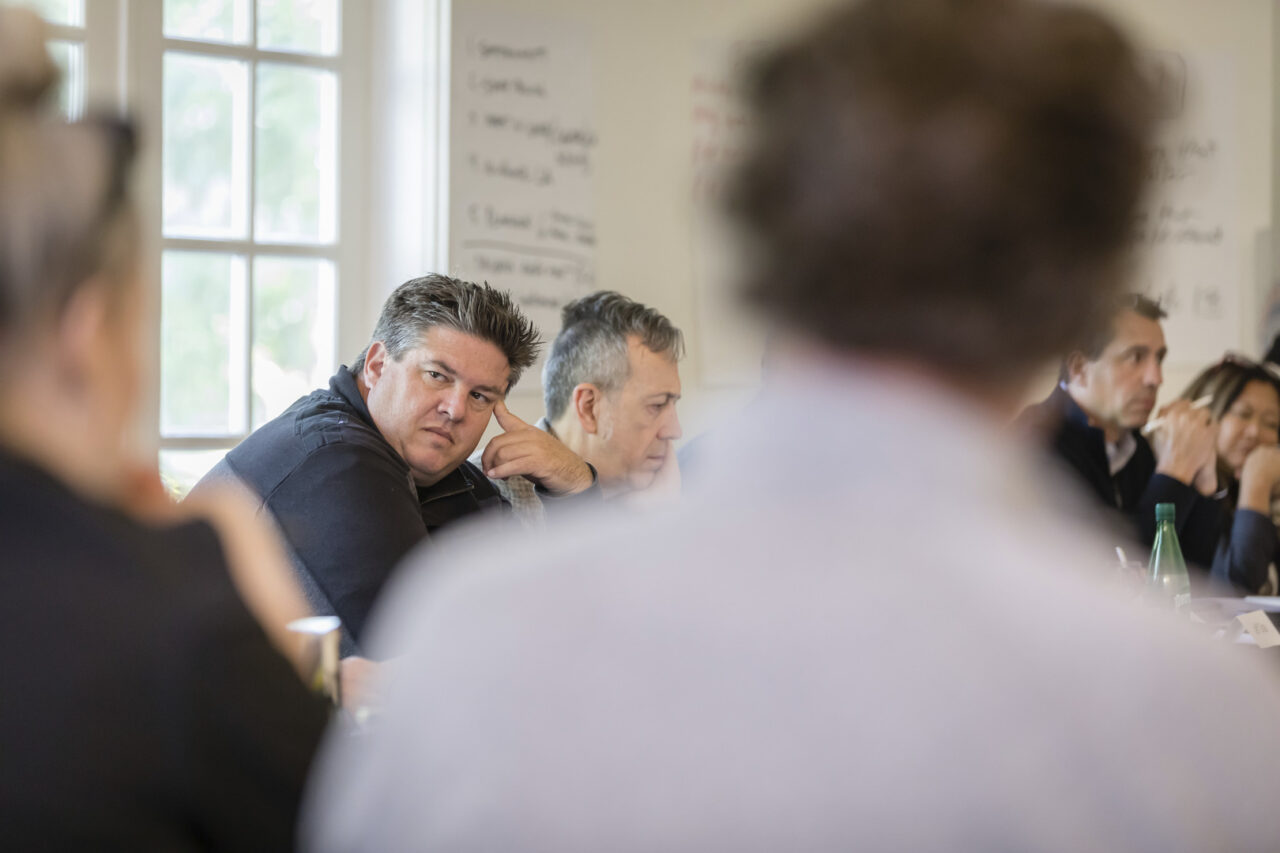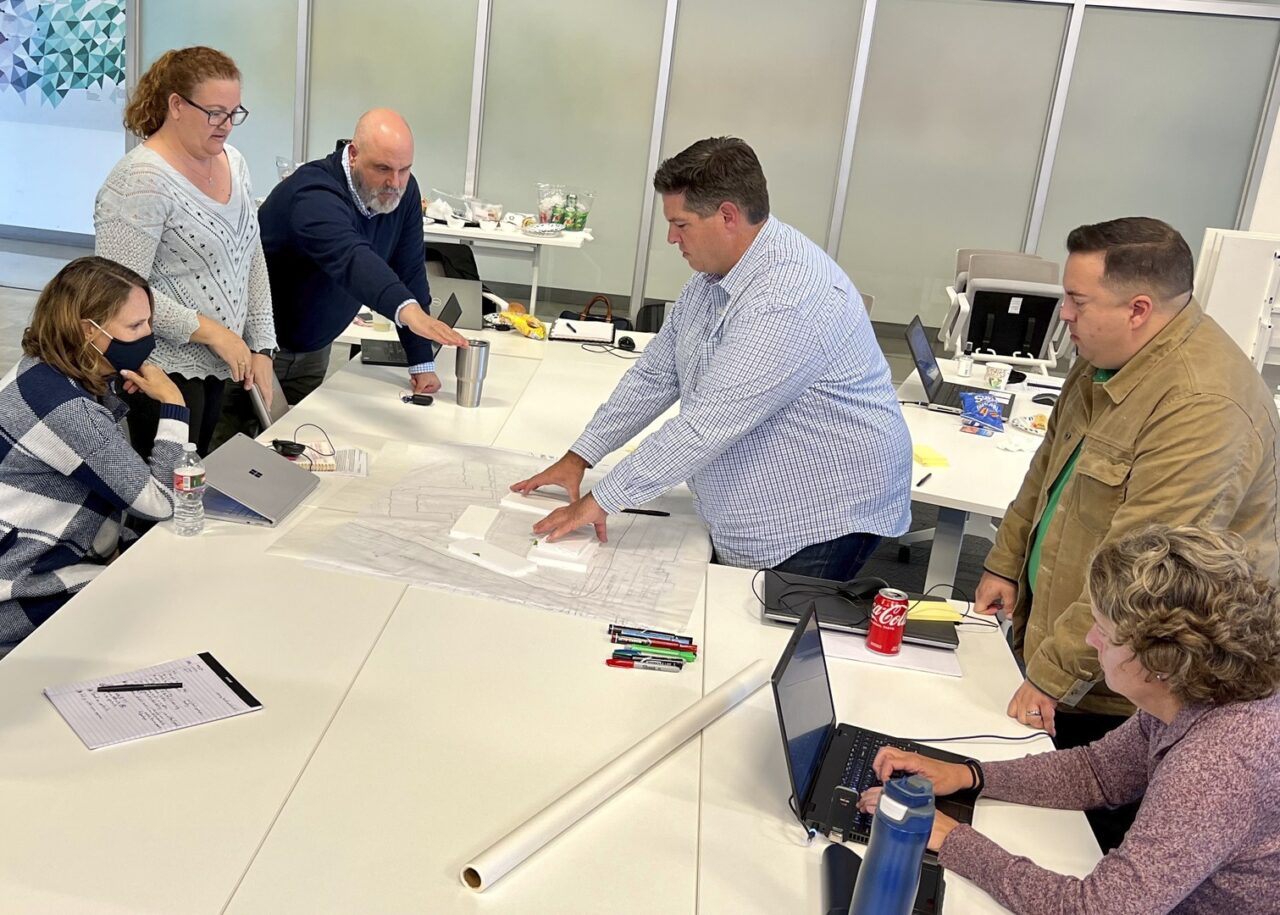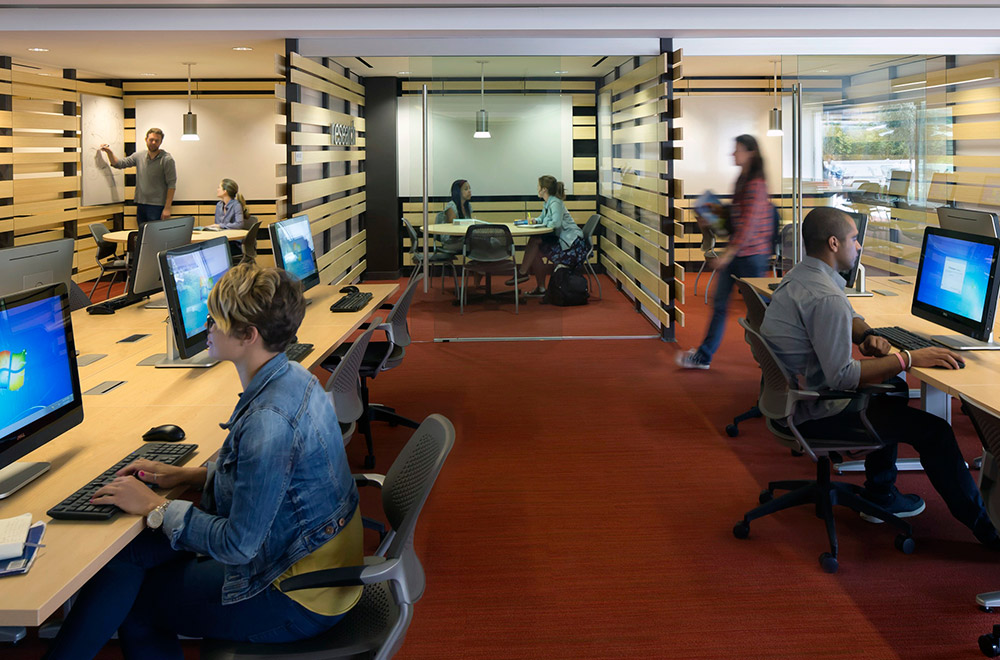Welcome to Five in Focus, HMC Architects’ blog series exploring the trends, ideas, and innovations shaping architecture and design. In each installment, we interview our design leaders to uncover what inspires them and gain valuable insights into their expertise.
This edition features James Sink, HMC Architects’ Higher Education Practice Leader. With 25 years of experience working alongside colleges and universities, James shares his perspective on the challenges and opportunities shaping the future of higher education architecture. Here are his five key insights from housing dilemmas to shifting student demographics.
1. The Challenge of Aging Student Housing and Limited Renovation Budgets
At the recent Association of Collegiate and University Housing Officers (ACUHO) conference, we had insightful conversations with housing directors across the U.S. A decade ago, the focus was on gender equity in student housing; three years ago, it was mental health. While these topics remain relevant, among today’s most pressing concerns are aging housing portfolios and a lack of funding for renovations.
Many residence halls built in the 1960s during the baby boom are now showing their age. The challenge is convincing leadership to invest in renovations when many institutions struggle to attract students, and housing plays a crucial role in recruitment. The key is to start somewhere: demonstrate the necessity of renovations, highlight their value in preserving campus identity, and emphasize sustainability. Thoughtful updates not only make financial sense but also enhance the student experience.
2. Declining College Enrollment: A Demographic Shift
Brace yourself—this one’s heavy. I highly recommend Jonas Salk’s A New Reality: Human Evolution for a Sustainable Future, which explores the global population plateau. Over the past few decades, birth rates have declined, and projections indicate that by the end of the century, the global population will peak at 10.4 billion before shrinking.
The implications for higher education are immediate. The college-age population has peaked and is now declining. Meanwhile, tuition costs are rising faster than income growth, making college less accessible. Students increasingly question whether the cost of education is worth the debt. These challenges don’t have quick fixes, but they demand creative solutions that prioritize accessibility, affordability, and adaptability to a changing demographic reality.

3. How NCAA JUCO Eligibility Changes Are Reshaping College Athletics
A recent NCAA ruling is set to alter the landscape of college athletics. In January 2025, the NCAA granted a temporary waiver extending junior college (JUCO) athletes’ eligibility by an additional year. If this change becomes permanent, it could redefine the role of community colleges in the athletic recruitment pipeline.
As a parent navigating my daughter’s soccer recruitment process, I see firsthand how challenging it is for high school athletes to get noticed. The rise of the transfer portal has already complicated things for high school players, and now, with extended JUCO eligibility, recruitment strategies will shift further. This change could encourage more athletes to start at community colleges, saving money and gaining experience before transferring to larger programs. Having attended a community college, a state school, and an Ivy League institution, I firmly believe that the journey matters more than the starting point.
4. The Next Evolution of Design-Build
Design-Build (DB) industry events have highlighted past successes for years, reinforcing the model’s strengths. But last year, something stood out. At the DBIA Western Pacific Region’s Sacramento conference, the conversation expanded beyond the usual discussions, exploring the impact of diverse teams and strong leadership.
DB projects often prioritize experienced teams—architects and contractors with a history of successful collaboration. This approach provides reliability and minimizes risk, ensuring a proven track record of performance. But could there also be value in fostering new team dynamics? Teams that haven’t worked together before might bring fresh perspectives and unexpected solutions, unlocking new possibilities. As a generalist designer, I thrive in unfamiliar and evolving scenarios, and I find it exciting to consider how embracing new team structures could shape the future of DB.

5. National DEI Shifts and Their Impact on Public Institutions
A pressing issue emerged during a recent meeting with senior housing officers from the Intermountain region: the growing conflict between state-level policies and campus diversity, equity, and inclusion (DEI) goals.
As more states adopt legislation restricting LGBTQIA+ students—mirroring policies like Florida’s—public institutions are caught in a bind. They must comply with state laws while striving to support diverse student populations. One school found a creative workaround, such as renaming DEI offices as “IDEA” centers (Inclusion, Diversity, Equity, and Access) to avoid political scrutiny. Others are leveraging off-campus partnerships to provide resources beyond the reach of state restrictions.
Although California operates in a more progressive DEI environment, hearing these stories from neighboring states is a stark reminder of higher education’s broader challenges. As General Patton famously said, “If everyone is thinking alike, then someone isn’t thinking.” Actual progress often requires finding solutions in the face of adversity.
What do you think about these trends? Contact me, and let’s keep the conversation going.

